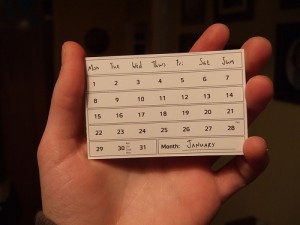Something I come across almost daily is determining the return on blogging and content development.

So return on blogging efforts is a must.
The tricky part is setting expectations. It’s something I try to get an understanding of with business owners before ever starting a new blog. I’ve seen where most blogs fail and I don’t want to set anyone up for failure. I’d much rather lay things out up front and make sure everyone has realistic expectations from the beginning.
Today I came across a great article that discussed blogging as a long-term strategy and I thought I’d highlight a few key points and provide some of my own thoughts.
I’ll start with my favorite point from the article…
Six Months to Blogging Success
The article is How to Measure the ROI of a Content Marketing Strategy
It’s worth 10 minutes of your time to read the entire article. It’s full of great points.
The first point I think is important is this:
Part of the reason for low blog success rate is that most of us have a hard time predicting what kind of return blogging will achieve. “If I blog every day for a month, will I get more leads?” Probably. But it may take six months, not one.
That’s a money quote and a breakthrough for anyone considering blogging as a marketing strategy.
Starting from scratch with a blog is like any new marketing strategy. It will take time to test the strategy. It will take time to adjust the strategy as you learn what works and what doesn’t. And the truth is you’ll probably have more failures with your blog than you will have successes.
When businesses first begin they don’t know exactly how to be as efficient as possible. A business that’s five years old has probably taken one or two marketing strategies out of many more to acquire new customers.
Blogging is a long-term strategy. It helps to have a partner with experience blogging. They have already made the mistakes you will probably make early on. They can skip you ahead a bit, but the fact remains it will take time to build an audience and a community willing to purchase your products and services.
Six months is a good timeline for testing. Once that period is over things should begin to narrow in scope as you move toward a more defined strategy of what to write about and how to take readers from the blog to the phone to the contact form or to the shopping cart.
The author, Shane Snow, makes another great point about measurement and indicator trends.
Looking for Trends of Success
As the days and weeks go by people get impatient with blogging. It can be expensive. The need to see immediate return is there. This is where it becomes important to assess if the blog is trending in the right direction.
As the author says:
It’s important to note that absolute measurements are rarely useful. What you’re looking for is a trend line. The number of retweets relative to previous content on your site or peer sites is a more useful yardstick than the total number of retweets.
Measurement is important. During the first six months you’ll want to look for trends. Are page views increasing? Are your posts being shared more than they were in the past? Are you getting more leads and more quality leads? Are you getting more clicks on your ads?
The trends are important. You don’t necessarily need a million page views each month to generate quality income and return from your blogging efforts. A few additional leads per month can be all it takes to bring in more profit.
And the great part about content marketing and blogging is once the posts are up they’re there forever for people to continue to find. Six months of blogging can be an enormous amount of content and it’s there forever for people to find. One good post can drive leads for the long-term.
And that brings us to the last point.
Blogging as Gardening
The author makes a great analogy about blogging:
Content costs money, and measuring the results of your content effort is important. But an effective content strategy is like planting a garden: it takes consistent work that eventually pays off in large quantities. However, failure to water or plow that garden will result in weeds…
Yes. Blogging is very much like gardening. Your first posts will not receive immediate traffic and attention. A collection of your blog posts over time will collectively drive traffic, sales, and leads.
That’s how it works. That’s the expectation you should have.
Conclusion
A key to any blogging strategy is patience combined with appropriate expectations. Blogging is a great way to drive sales and leads for your business if the strategy fits your business model. Understand that blogging takes time. Stick to a blogging schedule. And realize it will probably take six months before you see any sort of return at all on your investment.
Remember the gardening story.
Your blog is your garden and in six months time you’ll start reaping the rewards. Blogging is a long-term investment and with consistent tending the return continues even with posts published many months or even years ago.
Calendar Card image courtesy of Joe Lanman
